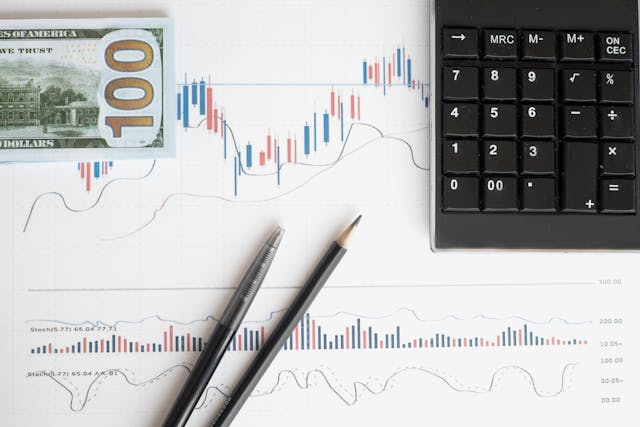What Is Market Sentiment in Forex and Crypto Trading?
Market sentiment in Forex and Crypto trading refers to the overall attitude or feeling of market participants towards a particular asset or the market as a whole. It reflects how traders and investors feel about future price movements, whether they are optimistic (bullish) or pessimistic (bearish).
In both Forex and Crypto markets, sentiment plays a vital role in influencing short term price action. While fundamentals and technical analysis remain crucial, ignoring trader psychology and crowd behaviour can leave you blindsided by major moves. Successful traders often learn to read the mood of the market just as effectively as they analyse charts or news.
Why Market Sentiment Matters in Forex and Cryptocurrency Trading
Understanding market sentiment helps traders:
- Stay ahead of price movements by predicting possible shifts in direction
- Avoid emotional decisions influenced by hype or fear
- Identify potential reversal zones during periods of extreme sentiment
- Confirm technical and fundamental signals using crowd psychology
Market sentiment is particularly crucial in crypto trading, where emotions like FOMO (Fear of Missing Out) and panic selling drive more volatility than in traditional markets. In Forex trading, sentiment often leads or lags behind macroeconomic indicators, making it a valuable complementary tool.

Types of Market Sentiment
1. Bullish Sentiment
A bullish sentiment occurs when traders expect the price of an asset to rise. In Forex, this might be due to strong economic indicators or central bank policies. In Crypto, bullish sentiment can be triggered by institutional adoption, favourable regulations, or major exchange listings.
2. Bearish Sentiment
A bearish market reflects a pessimistic outlook where traders anticipate a decline in prices. It may be driven by poor macroeconomic data, fear of regulation, or geopolitical uncertainty. In Crypto, news of hacks, exchange delistings, or environmental concerns can spark bearish sentiment.
How to Gauge Market Sentiment in Forex and Crypto
1. Sentiment Indicators
Commitment of Traders (COT) Report – Forex
The COT report, released by the US Commodity Futures Trading Commission (CFTC), shows the positioning of large speculators and commercial traders in the futures markets. Analysing this can reveal whether big players are bullish or bearish on major currency pairs.
Crypto Fear and Greed Index
This index analyses emotions and sentiment across multiple sources including volatility, social media, dominance, and Google Trends. Scores range from 0 (Extreme Fear) to 100 (Extreme Greed). It’s a powerful snapshot of current Crypto market mood.
Sentiment Scores from Brokers and Platforms
Platforms like IG Markets or TradingView provide real time sentiment gauges showing the ratio of long vs short positions on specific assets. These indicators offer a crowd sourced view of trader behaviour.
2. Social Media and Forums
Twitter, Reddit, Telegram Groups
Crypto sentiment can be heavily influenced by influencers and social chatter. Platforms like Twitter (X), Reddit’s r/CryptoCurrency, or Telegram trading groups can spark viral FOMO or panic within hours. Monitoring these spaces helps traders stay ahead of sentiment driven moves.
TradingView Comments and Ideas
Public sentiment is often visible in shared charts and trade setups. Analysing consensus among traders can add perspective to your own strategy.
3. News Headlines and Media Coverage
News events shape sentiment quickly and decisively. In Forex, key releases like NFP (Non Farm Payroll), central bank statements, or geopolitical events can shift sentiment rapidly. In Crypto, updates related to Bitcoin ETFs, SEC rulings, or regulatory crackdowns cause instant reactions.
Traders should combine headline scanning with price action to avoid reacting blindly. A bullish headline in a bearish market can result in traps, and vice versa.
4. Price Action and Volume Analysis
Sentiment often shows itself in:
- Candlestick patterns (e.g. pin bars, engulfing candles)
- Breakouts or fakeouts
- Volume spikes during news events
- Unusual volatility near key levels
Monitoring how price behaves around support, resistance, and psychological levels reveals whether traders are confident or uncertain.
Common Sentiment Trading Strategies
1. Contrarian Trading
Contrarian traders go against prevailing sentiment. When sentiment reaches an extreme, like everyone being overly bullish, it may signal a reversal. Tools like the COT report or Fear & Greed Index can help spot these moments.
For example: When the Crypto Fear & Greed Index hits extreme fear levels, savvy investors might buy into panic, expecting a rebound.
2. Sentiment Confirmation with Technical Analysis
Some traders use sentiment to confirm their technical setups. If you see a bullish breakout on the EUR/USD and sentiment data also shows increasing long positions from institutional traders, the setup gains validity.
3. News Reaction Fades
When market sentiment reacts too aggressively to news (spikes or drops), it often retraces. Traders can fade such moves once initial euphoria or panic dies down.
Challenges in Sentiment Analysis
1. Sentiment Can Change Rapidly
Especially in Crypto, where 24/7 markets react instantly to social media trends, sentiment shifts can be sudden and unpredictable.
2. Sentiment Alone Isn’t a Strategy
Using market sentiment in isolation often leads to misjudgement. Always pair it with technical or fundamental confirmation.
3. Noise and Misinformation
The crypto space is notorious for influencer manipulation, pump groups, and fake news. Discernment is key when using social sources for sentiment analysis.
Tools and Resources for Market Sentiment in Forex and Crypto
| Tool | Market | Usage |
|---|---|---|
| COT Report (CFTC) | Forex | Institutional positioning |
| IG Client Sentiment | Forex & Crypto | Retail trader bias |
| TradingView Sentiment | Both | Real time trader ideas and votes |
| Crypto Fear & Greed Index | Crypto | Sentiment score based on multiple data points |
| LunarCrush | Crypto | Social media sentiment analysis |
| Santiment | Crypto | On chain and social sentiment metrics |
Market Sentiment and Trading Psychology
Understanding market sentiment also improves your own psychology as a trader. It helps you:
- Recognise when you’re following the crowd blindly
- Understand the emotional climate of the market
- Manage risk better during hype cycles or crashes
- Avoid FOMO and revenge trading tendencies
Traders who stay emotionally detached and use sentiment as a tool, not a trigger, often outperform.
How PipInfuse Uses Market Sentiment
At PipInfuse, we integrate sentiment analysis into both Forex and Crypto trading and investment consultancy. Our team combines:
- Institutional data (COT reports, sentiment indexes)
- Technical charting tools
- AI driven news scanning
- Behavioural finance principles
We don’t follow the herd. We study it, so you can stay one step ahead.
Whether you’re copy trading with PipInfuse or building your own strategy, understanding market sentiment will help you make smarter, data backed decisions.
Mastering Market Sentiment for Smarter Trades
Market sentiment in Forex and Crypto trading is not just a buzzword, it’s a lens through which the true market dynamic unfolds. When used correctly, it helps you decode market behaviour, manage risk, and spot profitable setups before the crowd does.
Combine sentiment analysis with solid technical foundations and smart risk management to stay ahead. And if you need help interpreting market sentiment, PipInfuse is here with expert led consultancy, free guidance, and access to the tools professional forex traders use use.


